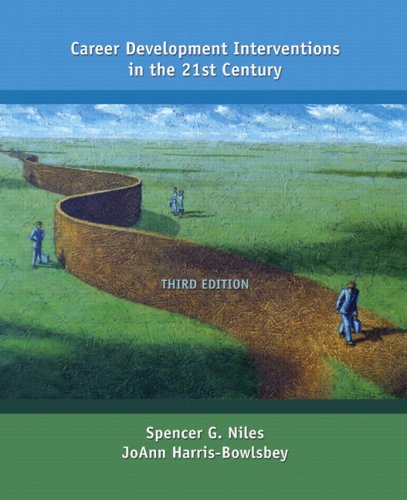Parents help us discover the gifts and the callings that God has for our lives. Parents help children and teens discover their vocational interests and the motivational gifts. Parents identify the steps and resources that are necessary to develop the qualities and talents that children and teens possess.
Parents know that children and teens receive the vocational interests, abilities, skills, and talents in a seed form. These seeds will develop into careers, jobs, tasks, assignments, or ministries. Then, the talents and gifts will produce earnings, wages, and spiritual rewards as the children receive pleasure from knowing that they are fulfilling the callings that God has placed on their lives.
The Goal of a Parent
A parent receives direction from Proverbs 18:16, Proverbs 22:6, and 1 Peter 4:10.
Proverbs 22:6 Train up a child in the way he should go: and when he is old, he will not depart from it.
1 Peter 4:10 As every man has received a gift, even so minister the same gift one to another, as good stewards of the manifold grace of God.
Proverbs 18:16 A man's gift makes room for him, and brings him before great men.
To learn about abilities, interests, and motivational gifts, parents have many tasks:
Assess children's and teens' vocational interests, abilities, skills, beliefs, and values.
Discover potential careers that are linked to children's and teens' identified interests.
Help children and teens choose the suitable post-secondary education and training.
Provide resources that help children and teens utilize their vocational interests, abilities, skills, beliefs, and values.
Understand the relationship between education, training, and specific occupations.
Introduce experiences that meet career, cognitive, emotional, and behavioral goals.
Present information on the current and future labor market.
Introduce problem-solving and decision-making strategies, and
Solve career issues, conflicts, and concerns.
The Steps Towards Completing Career Exploration Process
Step One: Preliminary Assessment
Parents must gain access to computerized, online, or paper/pencil career assessments. From these assessments, parents, teens, and children gain knowledge and understanding of our abilities, ambitions, aptitudes, identities, interests, life goals, resources, skills, and values. During this assessment period, parents will evaluate children's and teens' readiness for career planning.
Gary W. Peterson and others of the Center for the Study of Technology in Counseling and Career Development University Center, discussed the differences in career planning readiness. Children, teen, and adults can be categorized as:
Decided
Decided yet needing a confirmation
Decided yet not knowing how to implement their decisions
Decided choosing to avoid conflict or stress
Undecided
Undecided with a deferred choice
Undecided yet developmental unable to commit to a decision
Undecided and unable to make a decision because the individual is multi-talented
Children, teen, and adults transition from indecision to decisiveness when they complete the following steps in the career decision making and planning process.
Step Two: Educational and Occupational Exploration
Parents, children, and teens gather information about:
Educational choices
The benefits of educational achievement
The economy or labor market
Occupational choices
Specific occupations and programs of study
Training opportunities
The relationship between work and learning
Positive attitudes towards work and learning
Personal responsibility and good work habits
A typical working day for a specific occupation
Career exploration systems
Step Three: Problem solving
Parents, children, and teens solve career problems by:
Identifying educational and career planning obstacles
Creating solutions or courses of action
Setting achievable goals
Resolving conflict and tension
Making a commitment to reach our God-given potential
Problem solving should take into consideration personal values, interests, skills, and financial resources. Big problems are broken down into smaller, more manageable steps. Achievable goals result in the production of new competencies, attitudes, solutions, as well as educational and training opportunities.
Step Four: Goal Setting and Decision Making
As individuals, parents, children, and teens:
Set, formulate, prioritize, and rank goals
Clearly state our vocational interests, abilities, and values
Derive plans or strategies to implement the solutions
Make a commitment to complete the plans
Understand decision-making processes
Evaluate the primary choice
Consider a secondary occupational choice, if necessary
Decision-making processes include:
Developing learning and career plans
Identifying suitable occupations
Selecting appropriate educational programs
Figuring the costs of educational training
Considering the impact of career decisions.
Step Five: Implementation
While implementing and executing our learning and career plans, parents, children, and teens translate vocational interests, abilities, and skills into occupational possibilities. Parents, children, and teens do reality testing through interviewing current workers, job shadowing, part-time employment, full-time employment, and volunteer work. Parents, children, and teens obtain skill training, for example, social skills, resume writing, networking, and preparations for interviews.
Career Planning Resources
In order to assess gifts, talents, and abilities, parents, children, and teens need career resources. Career planning resources include books, videotapes, audio-tapes, games, workshops, self-assessment inventories, career exploration web-sites, and computer-assisted career guidance programs. These resources are found at libraries, community colleges, and resource centers.
The basis for most of the resources is the National Career Development Guidelines. In 1987, the National Occupational Information Coordinating Committee (NOICC) developed The National Career Development Guidelines. The guidelines were organized into three areas: Self-knowledge, Educational and Occupational Exploration, and Career Planning.
Self-knowledge deals with our self-concept, interpersonal skills, growth, and development.
Educational and occupational exploration reveals the relationships between learning, work, career information skills, job seeking, skill development, and the labor market.
Career planning includes self-assessment, career exploration, decision making, life role formation, goal setting, and the implementation of career choices.
Conclusion
We are each significant, different, and special. Yet, God knows our gifts, talents, and abilities. God has chosen us for special positions and tasks. Our occupations should reflect the callings that God has placed in our lives. Our vocations represent the gifts given to us by God. Our destinies come from God. Parents help children and teens discover God-given talents, abilities, and interests so that children and teens can fulfill God's purpose for their lives.
As parents, we will use prayer, the Word of God, other books, videotapes, audio-tapes, games, workshops, training materials, self-assessment inventories, career web-sites, computer-assisted career guidance programs, and resource centers to assist us in helping our children, and teens.
References
Miller, Juliet V. (1992) The National Career Development Guidelines, Eric Digest ED347493, ERIC Clearinghouse on Counseling and Personnel Services, Ann Arbor, Michigan
Peterson, G., W., Sampson, J., P., Jr., Reardon, R., C., and Lenz, J., G. (1996) A Cognitive Approach to Career Development and Services, Center for the Study of Technology in Counseling and Career Development, University Center, Suite A4100, Florida State University, Tallahassee, Florida 32306-1035, http://www.fsu.edu/ ~career/techcenter/html
Dr Mary Askew specializes in career tests, websites, and books for students. Find out how children and teens can reach their career potentials at [http://www.learning4liferesources.com] Contact Dr. Askew at learning4life@qwest.net


 "Career Diplomacy" - now in its second edition-is an insider's guide that examines the foreign service as an institution, a profession, and a career. Harry W. Kopp and Charles A. Gillespie, both of whom had long and distinguished careers in the foreign service, provide a full and well-rounded picture of the organization, its place in history, its strengths and weaknesses, and its role in American foreign affairs. Based on their own experiences and through interviews with over 100 current and former foreign service officers and specialists, the authors lay out what to expect in a foreign service career, from the entrance exam through midcareer and into the senior service-how the service works on paper, and in practice. The second edition addresses major changes that have occurred since 2007: the controversial effort to build an expeditionary foreign service to lead the work of stabilization and reconstruction in fragile states; deepening cooperation with the U.S. military and the changing role of the service in Iraq and Afghanistan; the ongoing surge in foreign service recruitment and hiring at the Department of State and U.S. Agency for International Development; and the growing integration of USAID's budget and mission with those of the Department of State.
"Career Diplomacy" - now in its second edition-is an insider's guide that examines the foreign service as an institution, a profession, and a career. Harry W. Kopp and Charles A. Gillespie, both of whom had long and distinguished careers in the foreign service, provide a full and well-rounded picture of the organization, its place in history, its strengths and weaknesses, and its role in American foreign affairs. Based on their own experiences and through interviews with over 100 current and former foreign service officers and specialists, the authors lay out what to expect in a foreign service career, from the entrance exam through midcareer and into the senior service-how the service works on paper, and in practice. The second edition addresses major changes that have occurred since 2007: the controversial effort to build an expeditionary foreign service to lead the work of stabilization and reconstruction in fragile states; deepening cooperation with the U.S. military and the changing role of the service in Iraq and Afghanistan; the ongoing surge in foreign service recruitment and hiring at the Department of State and U.S. Agency for International Development; and the growing integration of USAID's budget and mission with those of the Department of State. Intended for upper-division undergraduate or graduate programs of counselor education and human services. The course name is often called Career Counseling, Career Counseling Theories or Career Development.
Intended for upper-division undergraduate or graduate programs of counselor education and human services. The course name is often called Career Counseling, Career Counseling Theories or Career Development. This fun-filled series guides young readers through a multitude of career possibilities based on their specific interests and skills and links their talents to a wide variety of actual professions. Each book is filled with engaging text and playful illustrations that present a wide variety of career themes and options. Coverage begins with a set of questions designed to help kids discover who they are, what they like to do, and what they do best. Highly motivational, and just plain fun, chapters include: *Get in Gear! Kids learn how to link their interests to actual professions.
This fun-filled series guides young readers through a multitude of career possibilities based on their specific interests and skills and links their talents to a wide variety of actual professions. Each book is filled with engaging text and playful illustrations that present a wide variety of career themes and options. Coverage begins with a set of questions designed to help kids discover who they are, what they like to do, and what they do best. Highly motivational, and just plain fun, chapters include: *Get in Gear! Kids learn how to link their interests to actual professions.
 Providing the most current, comprehensive coverage available, CAREER COUNSELING: A HOLISTIC APPROACH, 8e equips readers with a solid understanding of the theoretical models of career counseling as well as practical techniques on how to effectively counsel clients. The text's innovative holistic or "whole person" approach demonstrates how to consider a client's values, temperament, talents, and passions when trying to determine his or her best career fit. Thoroughly revised and updated, the cutting-edge new Eighth Edition includes all-new chapters on integrating career and personal counseling, job loss and transitions, adult career development, and career-related programs in middle schools. In addition, diversity issues are integrated throughout, while relevant case studies bring chapter concepts to life.
Providing the most current, comprehensive coverage available, CAREER COUNSELING: A HOLISTIC APPROACH, 8e equips readers with a solid understanding of the theoretical models of career counseling as well as practical techniques on how to effectively counsel clients. The text's innovative holistic or "whole person" approach demonstrates how to consider a client's values, temperament, talents, and passions when trying to determine his or her best career fit. Thoroughly revised and updated, the cutting-edge new Eighth Edition includes all-new chapters on integrating career and personal counseling, job loss and transitions, adult career development, and career-related programs in middle schools. In addition, diversity issues are integrated throughout, while relevant case studies bring chapter concepts to life.